7 Best Grass Types for St. Petersburg, FL
BY ABDUL WADOOD | APRIL 17TH, 2023 | FLORIDA, LAWN CARE, ST. PETERSBURGIt would be tough to find a better climate than St. Petersburg’s, with its warm temps and abundant sunshine. This tropical weather makes it a great place to live and play, but it also gives you an opportunity to have a magnificent lawn year-round, provided you know what grasses thrive here.
Let’s take a look at the seven best grass types for St. Petersburg.
In this article:
- Best Grass Types for St. Petersburg Lawns
- FAQ About St. Petersburg Grass Types
- How to Choose the Right Grass for Your St. Petersburg Lawn?
Best Grass Types for St. Petersburg Lawns
All grass types come under these two categories.
- Warm-season grasses are originally from tropical regions and perform best during late spring and summer. They grow best when the temperature is between 75 and 90 degrees Fahrenheit.
- Cool-season grasses perform best during early spring and fall when the temperatures range between 55 and 75 degrees Fahrenheit.
As you might have guessed, warm-season grasses thrive best in St. Petersburg’s humid subtropical climate.
1. Bermudagrass
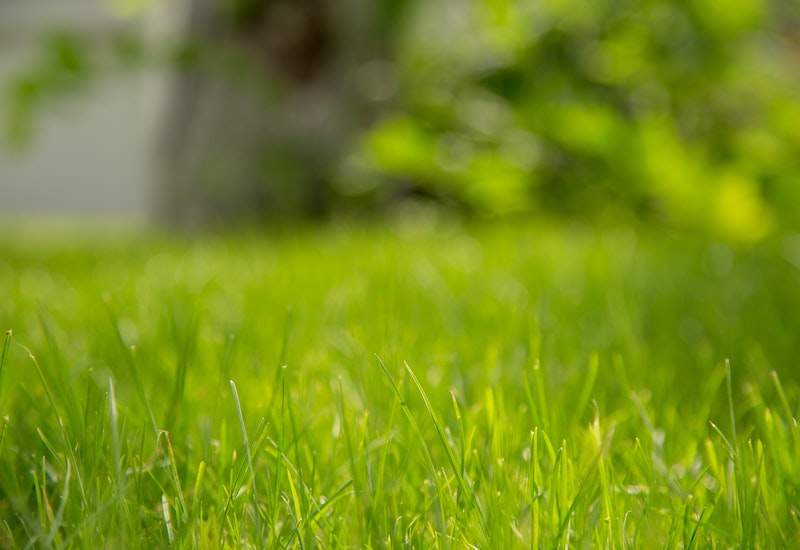
Photo Credit: Pexels
Bermudagrass is a quick-spreading and fast-growing turf that looks gorgeous. It requires high maintenance and grows best in full sun.
Bermudagrass tolerates drought but requires you to fertilize it five times a year and mow once per week. It tolerates high foot traffic too, and can quickly recover from damages. In fact, Bermudagrass is used on football fields and golf courses because of its durability.
- Classification: Warm-season grass
- Spreads by: Stolons and rhizomes
- Shade tolerance: Low, thrives in full sun
- Drought tolerance: High
- Foot traffic tolerance: High
- Maintenance needs: Needs frequent mowing due to fast growth rate, develops thatch easily, and needs regular fertilization
- Mowing height: Set the mowing height between 0.5 and 1.5 inches for hybrid Bermudagrass cultivars. Mow common Bermudagrass to a height of 1.5 to 2.5 inches.
- Potential for disease: Good resistance to disease. Low resistance to insects.
2. St. Augustinegrass
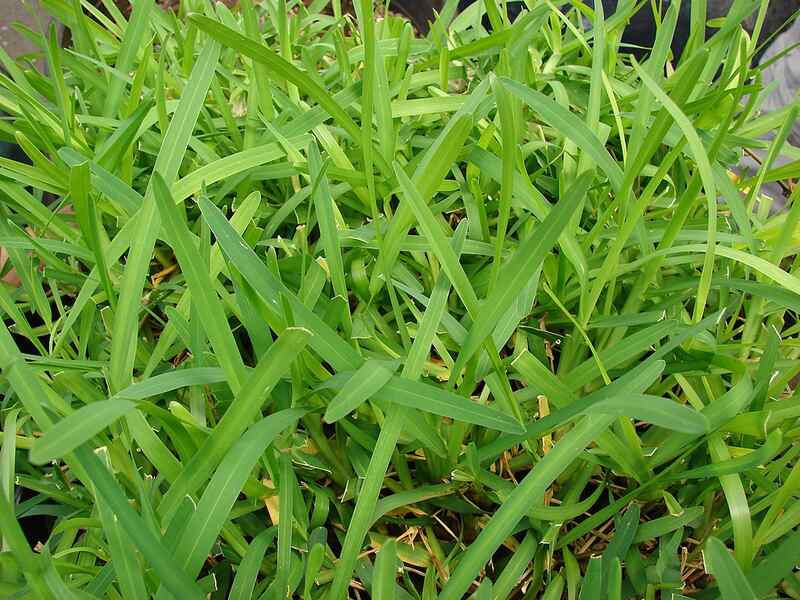
Photo Credit: Forest & Kim Starr / Wikimedia Commons / CC BY 3.0 US
St. Augustinegrass is among the most popular turfs in the Tampa Bay area. It grows best in full sun but can tolerate shade. St. Augustinegrass looks beautiful with its dense green to blue-green coarse grass blades.
If you have kids and pets running around your yard, St. Augustinegrass isn’t a good option, as it can’t tolerate high foot traffic. It’s a high-maintenance grass that requires you to fertilize it four times a year and mow once a week. Avoid irrigating St. Augustinegrass with salt water as it can’t tolerate salt much.
- Classification: Warm-season grass
- Spreads by: Stolons
- Shade tolerance: Moderate, thrives in full sun
- Drought tolerance: Moderate to high
- Foot traffic tolerance: Low
- Maintenance needs: Needs frequent mowing due to fast growth rate, develops thatch easily, and needs regular fertilization
- Mowing height: Set the mowing height between 3.5 and 4 inches
- Potential for disease: Moderate to high
3. Centipedegrass
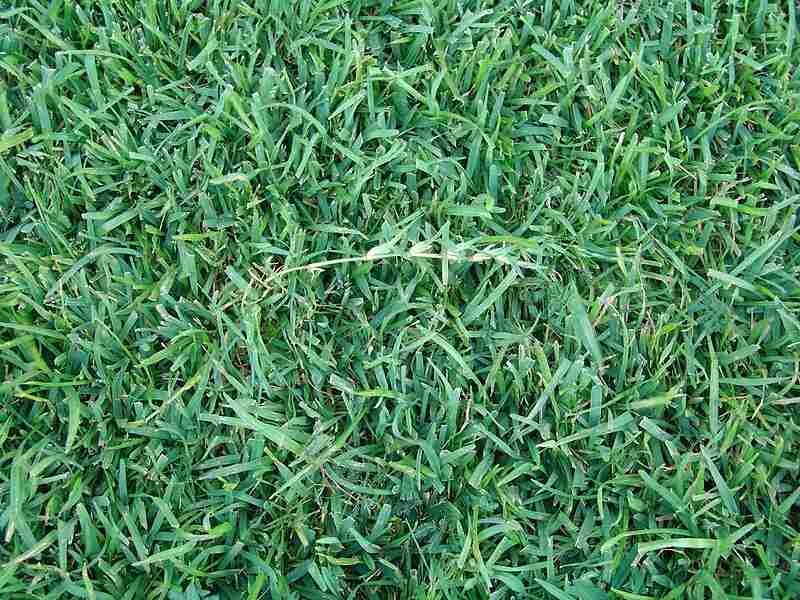
Photo Credit: James Becwar / Wikimedia Commons / CC0 1.0
Centipedegrass is a beautiful grass that’s light to medium green in color. It’s slow growing but requires little maintenance when established. Centipedegrass grows best in full sun but can tolerate partial shade.
Centipedegrass takes about two years to form a dense turf. During this period, you should keep the weeds in control. Centipedegrass can resist most insects but can’t tolerate high foot traffic and salt.
- Classification: Warm-season grass
- Spreads by: Stolons
- Shade tolerance: Moderate
- Drought tolerance: Moderate
- Foot traffic tolerance: Low
- Maintenance needs: Moderate
- Mowing height: Set the mowing height between 1 and 2 inches
- Potential for disease: Moderate
4. Buffalograss
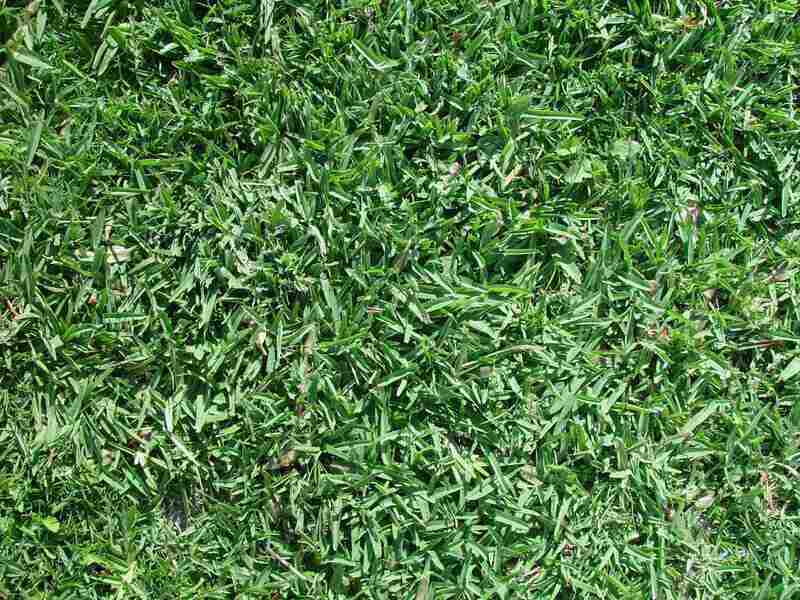
Photo Credit: Pixnio
Buffalograss looks beautiful with its bluish-green, fine-textured grass. It’s soft on bare feet, but it can’t tolerate high foot traffic. Buffalograss grows well in clay soil and can thrive in soils with pH levels between 6.0 to 8.0.
Buffalograss grows best in full sun and tolerates drought. Don’t overwater it, as the grass can attract weeds.
- Classification: Warm-season grass
- Spreads by: Stolons
- Shade tolerance: Low
- Drought tolerance: High
- Foot traffic tolerance: Low
- Maintenance needs: Low fertilizer and mowing needs. Develops thatch and requires weed control.
- Mowing height: 2 to 3 inches
- Potential for disease: Good resistance against diseases and insects
5. Zoysiagrass
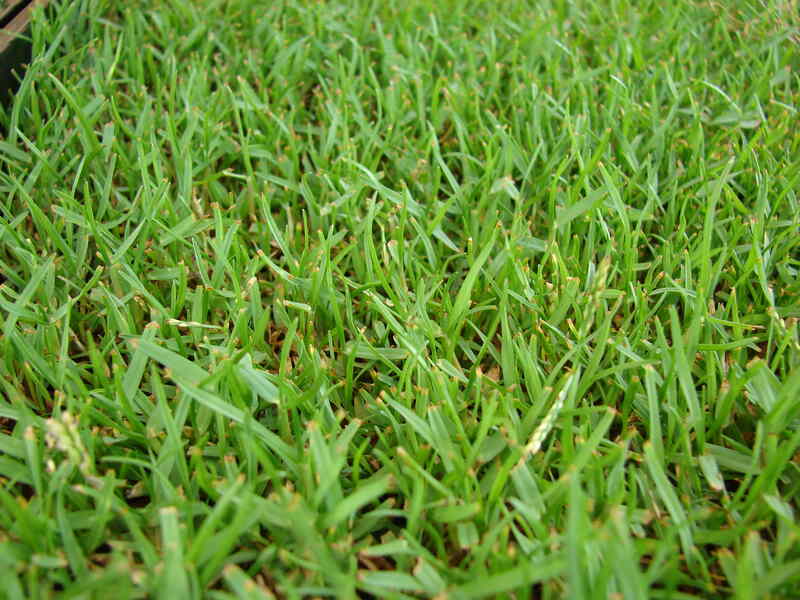
Photo Credit: Forest and Kim Starr / Flickr / CC BY 2.0
Zoysia is a popular grass across Florida because it’s beautiful, durable, and can tolerate high foot traffic. It grows slowly and takes time to recover from damages. If your home is near St. Pete Beach, Zoysia can be a great option, as it can tolerate salt.
Zoysia prefers full sun but can grow in partial shade too. It can resist diseases and insects, so you don’t have to worry about chinch bugs destroying your grass.
- Classification: Warm-season grass
- Spreads by: Stolons and rhizomes
- Shade tolerance: Moderate
- Drought tolerance: Moderate
- Foot traffic tolerance: High, but recovers slowly from damage
- Maintenance needs: Low fertilizer requirements; prone to thatch build-up.
- Mowing height: Set mowing height between 1 and 2 inches
- Potential for disease: Good resistance against diseases and insects
6. Bahiagrass
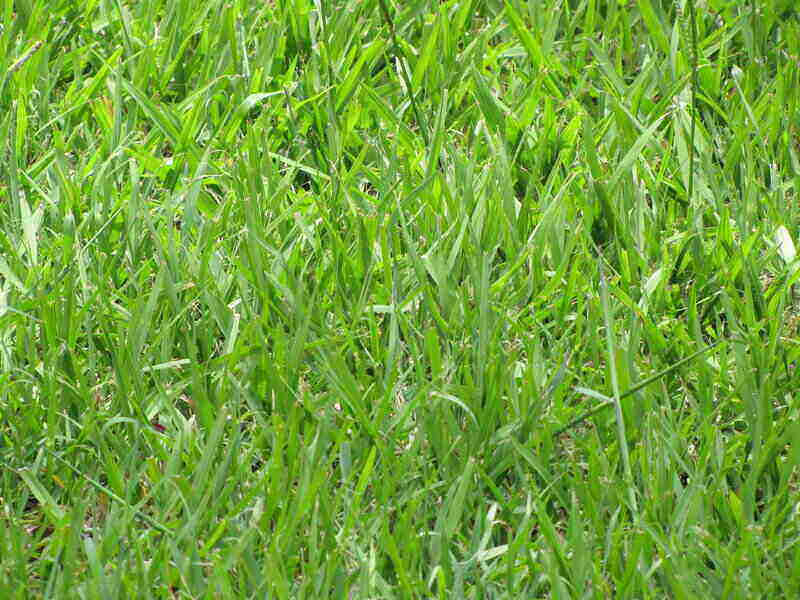
Photo Credit: Forest and Kim Starr / Flickr / CC BY 2.0
Bahiagrass is distinctive with its light green appearance. It prefers full sun and can’t tolerate high foot traffic. Bahiagrass requires little maintenance and can tolerate drought. But when you don’t water the grass for an extended period, it can turn brown because of drought-induced dormancy.
Bahiagrass resists diseases and insects. If you have salt water in your irrigation system, stay away from this grass as it can’t tolerate salt much.
- Classification: Warm-season grass
- Spreads by: Stolons
- Shade tolerance: Low
- Drought tolerance: Moderate
- Foot traffic tolerance: Low
- Maintenance needs: Low fertilizer requirements. Needs frequent mowing (every one to two weeks) to remove seed heads.
- Mowing height: 3 to 4 inches
- Potential for disease: Good resistance against diseases and insects
7. Seashore Paspalum
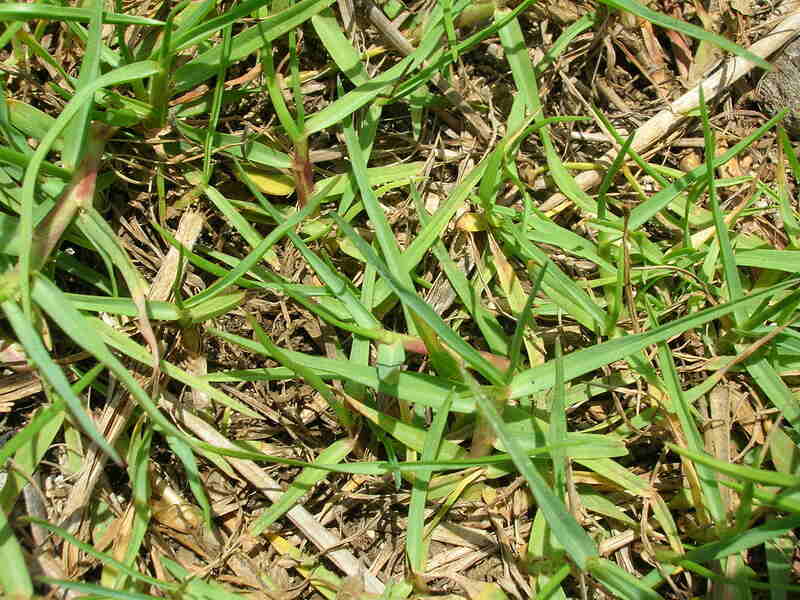
Photo Credit: Forest & Kim Starr / Wikimedia Commons / CC BY 3.0
Seashore paspalum can be a great option for homes near St. Pete Beach as it has incredible salt tolerance. It grows best in full sun and can tolerate high foot traffic. Seashore paspalum requires frequent mowing, but be careful when mowing this grass as it takes a long time to recover from damage.
Seashore paspalum can’t tolerate drought and is susceptible to diseases like large patches and dollar spots.
- Classification: Warm-season grass
- Spreads by: Stolons and rhizomes
- Shade tolerance: Low to moderate
- Drought tolerance: Moderate
- Foot traffic tolerance: Moderate
- Maintenance needs: Moderate fertilizer and frequent mowing requirements
- Mowing height: Set mowing height between 1 and 2 inches
- Potential for disease: Moderate. Common diseases include large patches and dollar spots.
FAQ About St. Petersburg Grass Types
Bermudagrass and buffalograss are hardy and do well in dry conditions.
If your lawn is shady, you can plant St. Augustinegrass, centipedegrass, Zoysia, and bahiagrass.
Buffalograss, Zoysia, and bahiagrass are the best options for low-maintenance lawns.
How to Choose the Right Grass Type for Your St. Petersburg Lawn?
If you want to enjoy a lush green lawn year-round, it’s possible with these warm-season grasses. Choose a grass type that best suits your requirements and your lawn’s condition.
St. Augustinegrass and Zoysia are the most popular grass types among St. Petersburg homeowners. They both look beautiful and can tolerate high foot traffic.
Planting the right grass can increase the appearance of your lawn. But if you want your yard to look complete, you should select the right plants and maintain your yard correctly.
Keep your lawn in good shape with Wikilawn St. Petersburg lawn care experts.
Main Image Credit: John O’Neill / Wikimedia Commons / CC BY-SA 3.0